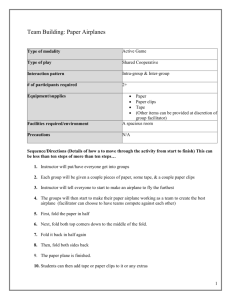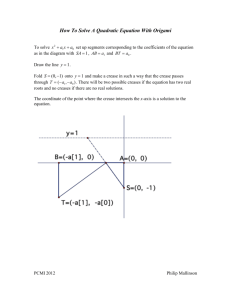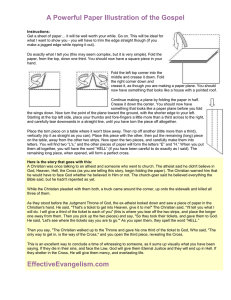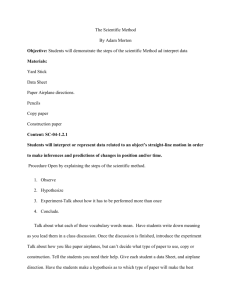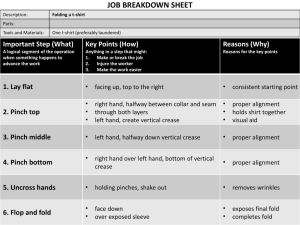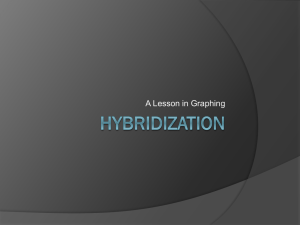Activity Name: Designing a Paper Airplane
advertisement
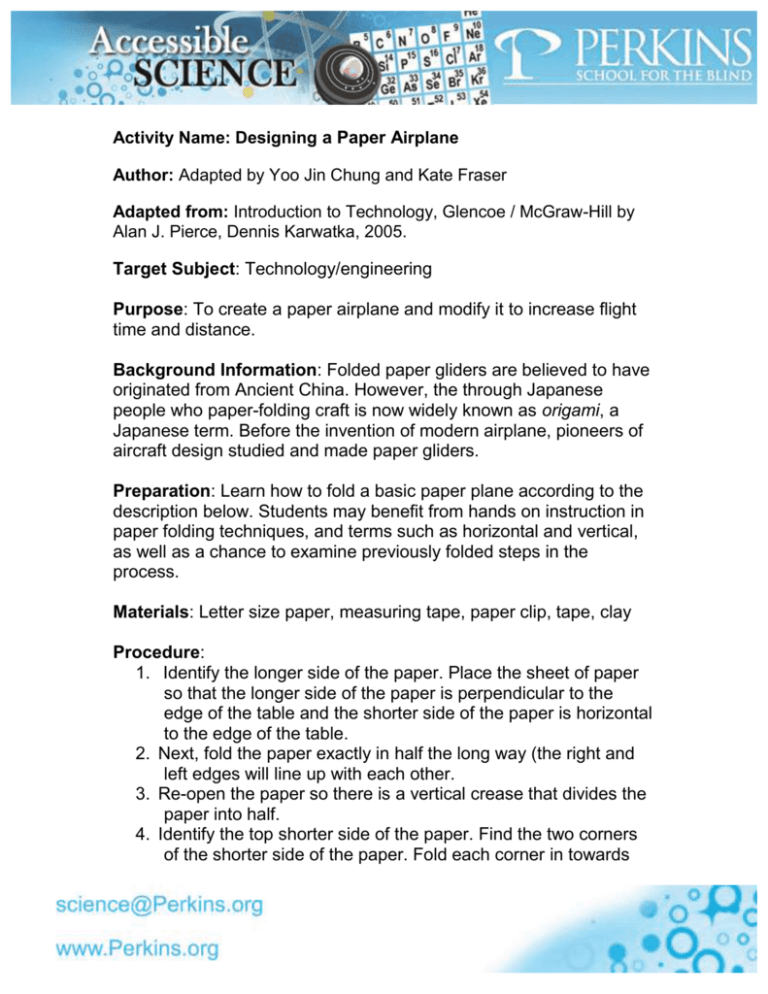
Activity Name: Designing a Paper Airplane Author: Adapted by Yoo Jin Chung and Kate Fraser Adapted from: Introduction to Technology, Glencoe / McGraw-Hill by Alan J. Pierce, Dennis Karwatka, 2005. Target Subject: Technology/engineering Purpose: To create a paper airplane and modify it to increase flight time and distance. Background Information: Folded paper gliders are believed to have originated from Ancient China. However, the through Japanese people who paper-folding craft is now widely known as origami, a Japanese term. Before the invention of modern airplane, pioneers of aircraft design studied and made paper gliders. Preparation: Learn how to fold a basic paper plane according to the description below. Students may benefit from hands on instruction in paper folding techniques, and terms such as horizontal and vertical, as well as a chance to examine previously folded steps in the process. Materials: Letter size paper, measuring tape, paper clip, tape, clay Procedure: 1. Identify the longer side of the paper. Place the sheet of paper so that the longer side of the paper is perpendicular to the edge of the table and the shorter side of the paper is horizontal to the edge of the table. 2. Next, fold the paper exactly in half the long way (the right and left edges will line up with each other. 3. Re-open the paper so there is a vertical crease that divides the paper into half. 4. Identify the top shorter side of the paper. Find the two corners of the shorter side of the paper. Fold each corner in towards the center, to the point where the inside edge of the paper meets the crease identified in step 3. 5. The paper now looks like a house, with pointed roof and a rectangular bottom. Starting at the tip of the “roof”, bring each fold to meet at the crease in the center. 6. Now the paper looks like a triangle with a long, pointy tip and two flaps on two sides. 7. Starting at the bottom corners of the triangle, fold the sides inward until the sides meet the center crease. 8. Your paper now looks like a very thin slice of pizza, with a crack in the center. Flip the paper over, so that the paper is smooth without any inward folds. 9. Identify the center crease and the two long sides. Fold the paper in half inward. 10. Your plane now has a flat glider-like wing and a perpendicular triangular base below the wings. Hold the base lightly, with the pointy tip of the plane facing away from you, and fly the plane. 11. Measure how far the plane went with the measuring tape. Record the data 12. Improve the plane so that it flies farther? Try taping certain parts of the plane or folding in a different way. Describe each design in your data and record the various distances 13. Now, try attaching a paper clip at the base of the plane, near the pointy tip. Does it help the plane fly better? What if you put clay there? Why do you think this changes how far it flies? Resources: Pierce, Alan J. and Dennis Karwatka. Introduction to Technology, Third Edition, The McGraw Hill Companies, 2005, pages 46 and 47.
